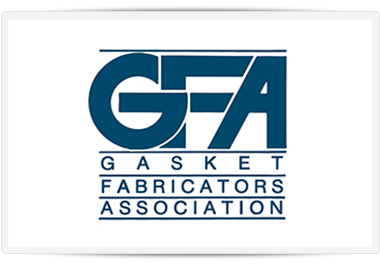According to Grandview Research, the global gasket and seal market was valued at $56.9B in 2021 and is expected to grow at a CAGR of 4.1% through 2030.
That’s literally tons of gaskets and seals.
The largest consumers of gaskets and seals are the automotive industry and the electronics industry.
Gaskets and seals are often grouped together. And people mistakenly use the term gasket and the term seal interchangeably. But they aren’t the same thing.
Gaskets aren’t seals, and seals aren’t gaskets. They may perform some of the same functions yet they are very different.
Let’s look at the difference between a gasket and a seal.
Defining a Gasket
To best understand the differences between a gasket and a seal, we’ll start with the basic definition of a gasket.
A gasket is a flat piece of material that connects two flat surfaces. Connecting pipe flanges is just another day on the job for a gasket.
Gaskets offer some degree of compression and protect against leaks. They keep what’s on the inside in and what’s on the outside out.
Gaskets are often cut into shapes to fit the components and can include open areas to accommodate bolts and other fasteners. The die-cutting process is an efficient and cost-effective method of manufacturing gaskets.
Defining a Seal
A seal also connects two surfaces. Where a gasket marries stationary surfaces, seals connect dynamic pieces.
A seal is round, unlike flat gaskets. One side might be angled to fit a lip on one of the connecting parts. O-rings are a common type of seal. Seals fit tightly in a channel or groove.
Too often, confusion arises because what is a gasket is referred to as a seal. For example, how often have you heard the threshold weatherstripping on a door referred to as a weather seal? Yeah, well unless you are in the fenestration business, you probably didn’t realize that’s a gasket – not a seal.
When Do You Need a Gasket
Use a gasket if you need to reduce vibration or noise at the connection and both components are static. A gasket fits the bill if you need to connect two flat surfaces and prevent gasses or liquids from leaking.
There are an infinite number of gaskets available, as gaskets are cut to fit your needs. Gaskets find their way into the automotive industry (the manifold gasket goes between the cylinder head and the manifold), electrical components (door gaskets on electrical boxes), and even the operating room (gaskets in surgical drills and anesthesia equipment). Gaskets are what keep windows and skylights airtight and watertight. Airplanes wouldn’t be the same without gaskets. The systems that operate the landing gear and wing flaps rely on gaskets.
When Do You Need a Seal?
If the parts move, you need a seal. Think rotating shafts, engine parts, and pumps. Use a seal to contain the lubricant on ball bearings.
Seals are used on pipe joints, hydraulic systems, and fuel systems. In the medical industry, you’ll find seals in spirometers and ventilators. In aviation, aircraft ventilation relies on seals on the HVAC system and the vent ducts. Seals are crucial to SCUBA safety. Every diver knows to check the o-ring in the neck of their air tank before hitting the water.
Gasket Materials
Gaskets are available in a wide range of natural and synthetic rubbers. There are metal gaskets and cork gaskets. You can have a gasket made of foam or sponge material.
And when it comes to synthetic elastomers, there are even more options.
Picking the correct gasket material requires consideration of the gasket’s working environment. Factors such as temperature, ozone and oxygen levels, and water or chemical exposure must be carefully considered.
How the gasket is used in the manufacturing process comes into play as well.
Luckily the Frank Lowe team has years of experience matching the material to the gasket. Together, you’ll explore your options, pursue viability in terms of cost and performance, and then create the gasket that fits your needs and your budget.
Seal Materials
Seals are available in many synthetic elastomers as well as natural rubber. The seal material can be extruded or made with pressure, transfer, or injection molding. Common seal materials include:
Like gaskets, seals must be manufactured to tight specifications. When picking a material, you must consider the temperature, the environment, industry regulations, and compression set. How well a material stands up to repeated compression is an important factor in the longevity of a seal.
Sourcing Gaskets
As one of the industry’s leading fabricators, Frank Lowe can die-cut your gasket from almost any non-metallic material.
Explain your needs and together we’ll explore your options and create a solution. Our out-of-the-box thinking may lead you to consider gaskets in a new light.
And once we establish a relationship, you can rely on Frank Lowe to supply the gaskets you need when you need them. Your supply chain is rock solid when you rely on Frank Lowe.






